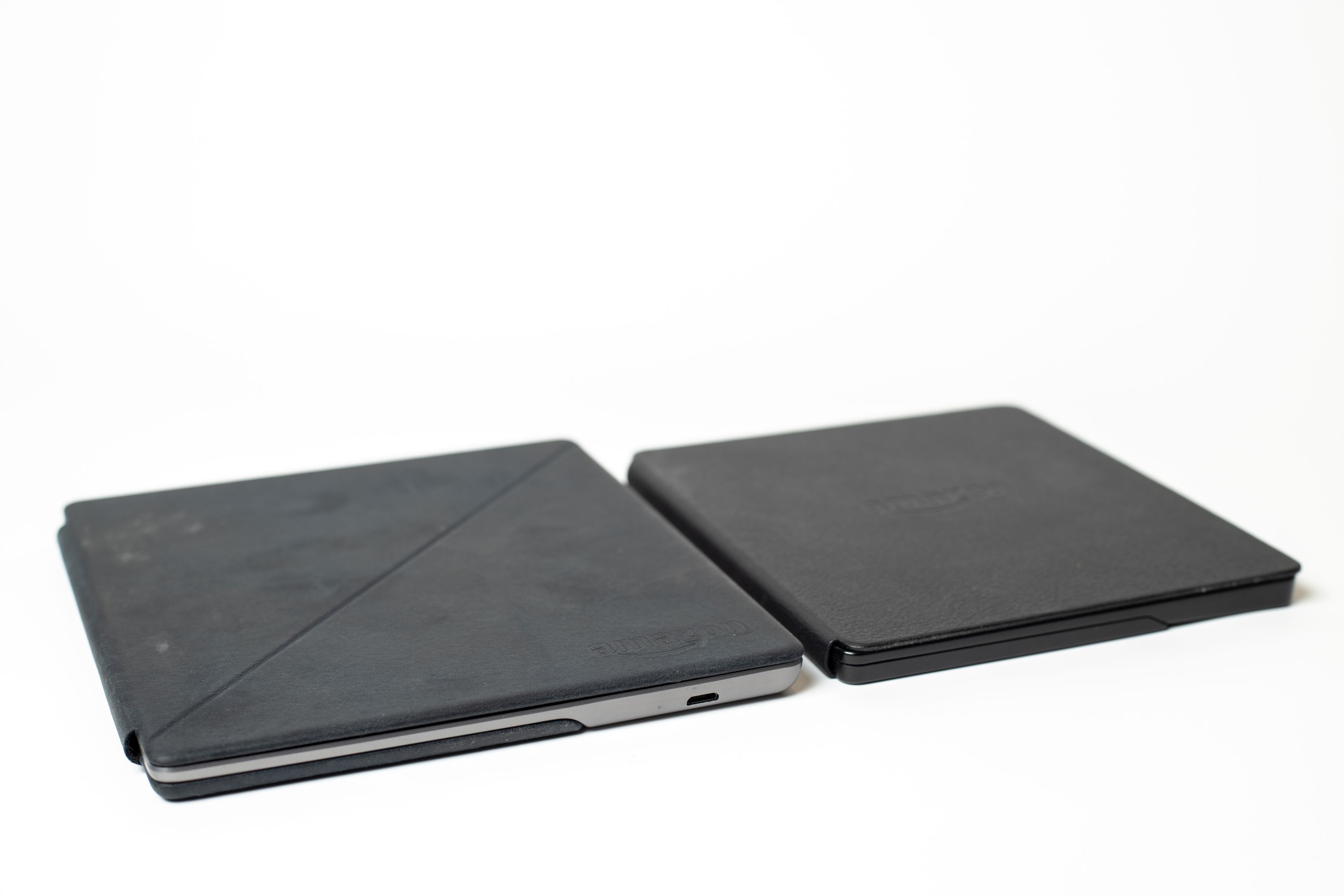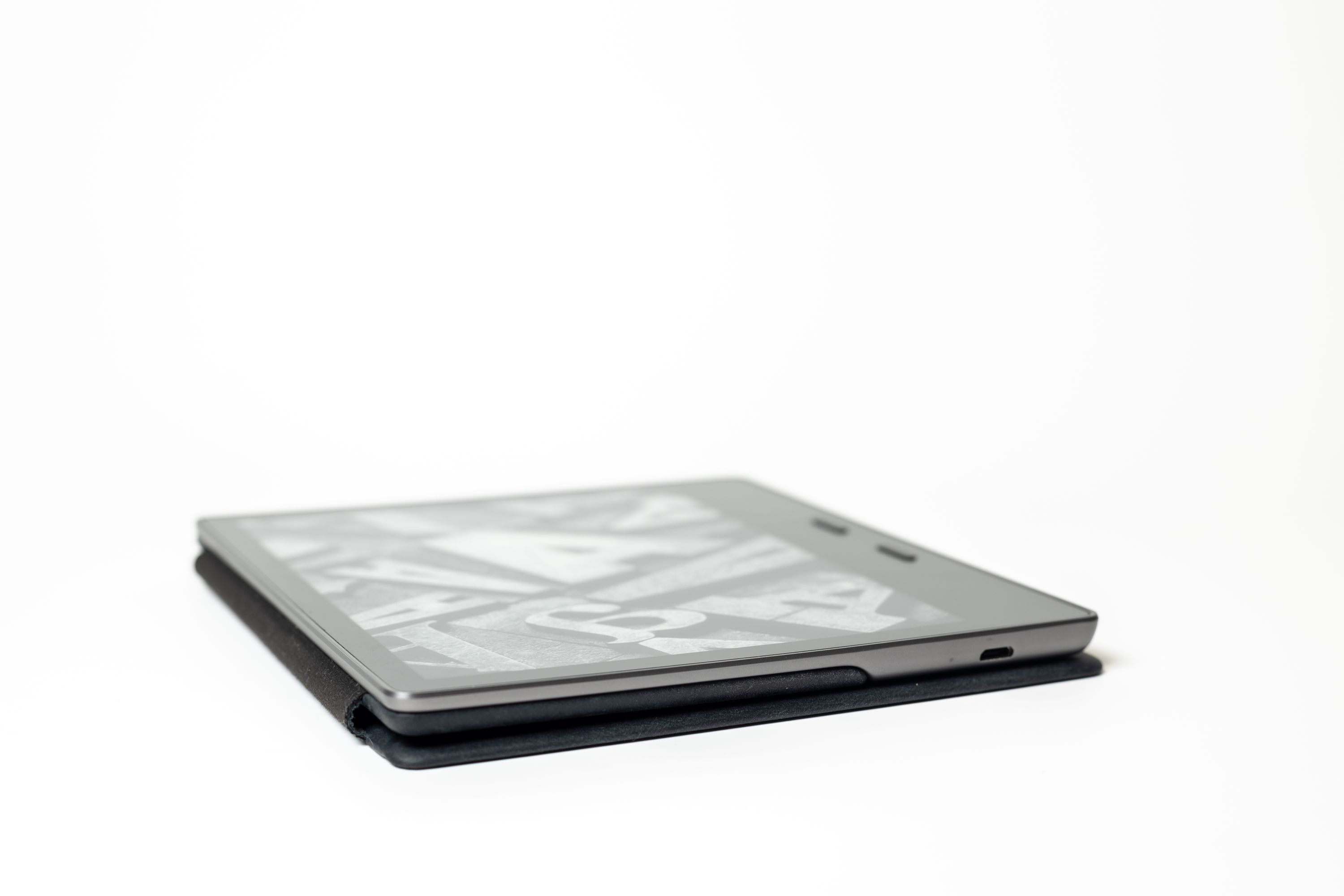Amazon Kindle Oasis Review (All Generations)
Just Buy the Paperwhite Instead

The Oasis was the first Amazon Kindle product to make me read less instead of more.
When the first generation Oasis arrived on my doorstep nearly three years ago, it made a less-than-positive first impression. It was slower to wake from sleep than the Voyage that preceded it, had no meaningful improvements to the screen, and introduced a brand new form factor whose benefits I didn’t find beneficial.
I struggled to write about it, wanting to give it time to settle into my life and reveal its advantages, but before I knew it the second generation was out. My impressions of the first generation Oasis were largely reinforced by the arrival of its successor, the Oasis 2, which I have also had since release. Now, the third generation of Oasis is out and it’s clear that Amazon intends to continue with this form factor as the pinnacle of its e-reading empire.
There’s just one problem: I don’t think it’s better.
Having now come to firm conclusions about how these flagship devices do and do not carry the Kindle line forward, I want to explain and potentially save you a ton of money if you’re looking for an e-reader to buy.
Asymmetry
Contrary to the prevailing opinion that the Oasis is a superior form factor that’s totally worth it if you can stomach the price, I think the new flagships are a weird side-grade at best.
A lot of this has to do with the asymmetrical design, ostensibly intended to feel more comfortable in the hand by distributing the weight toward your palm. I was totally open to this idea at first because it seems to make logical sense. But in real-world use, after years of going back and forth between this and the old-school symmetrical designs, I just don’t buy it. And I’m not alone.
The new form factor is problematic for several reasons:
- When you swap hands during long reading sessions, you now have to flip the entire device around too so the buttons can remain under your fingers
- The wedge shape means that your Kindle now relies partly on its cover for full battery life, and even with the cover attached I’ve found battery life to be worse on the Oasis models than previous generations
- The second and third generation Oasis models are significantly heavier than previous Kindles, so any potential comfort gained through the new shape is offset by the increased heft of the thing
I’m sad to see that this is now the future of ereading form factors because it feels like a classic example of a solution in search of a problem. And it’s contagious too—poor Kobo have found themselves making their very own lopsided ereader to stay competitive.
While I’m sharing controversial opinions, I should also state that I don’t particularly like the buttons. They’re not 100% reliable, for one thing, and I find that pushing a clicky button in hundreds of times puts more strain on my thumb than a simple swipe or gentle tap.
The Kindle Voyage represented a best-of-both-worlds approach, with subtle haptic buttons for those who didn’t want to move their thumbs, and swipe/tap capability for those who do.
What is it Good For?
If we set aside the form factor, we’re left with a fairly anaemic range of improvements that Amazon has brought to its Kindles over the past few years.
Waterproofing is a major one, and a welcome improvement for beach, pool, and tub readers. Another is the third gen Oasis’ adjustable colour temperature, a feature we first saw on the Kobo Aura One three years ago.
On the software side, we’ve gained official support for third-party fonts, which I use, and a new home screen layout, which I don’t.
Really, the biggest enhancement to the Kindle family has been a welcomed shift of value to the lower end models. The entry-level Kindle now has the front-lit display, and the latest Paperwhite has a flush screen and waterproofing.
Back in the Voyage days, going from the Paperwhite to the flagship gave you the nicer flush screen, more even lighting, the haptic page turn buttons, and a much lighter form factor, plus the outstanding origami case. While it was still expensive, I thought it represented a concrete upgrade that would be worth splurging on for dedicated readers.
Today, I simply don’t think this is true.
From the current Paperwhite to the Oasis, you get the same storage choices, the same connectivity choices, the same flush screen, the same resolution, and the same waterproofing. Your “upgrade” buys you 1” of extra screen real estate, some additional LEDs that may or may not provide more even lighting1, the “improved” ergonomic design, colour temperature adjustment, and a heavier, bulkier device to pack. The Oasis is also more expensive than the Voyage was, so you’re paying more to get less of an upgrade.
I should also mention that Amazon still hasn’t put a USB-C port on any of their ereaders, nor have they enabled low-hanging fruit software features that users have been requesting for years like book cover screensavers.

My Recommendation
I used to say that everyone should buy the Paperwhite and that folks looking for a bit of luxury should step up to the Voyage.
Now, I don’t think anyone should buy the Oasis. It just isn’t better in any way that should matter for a reading device. Not everything in our lives has to be thrown down the consumerist vortex of false luxury.
The Paperwhite remains the best Kindle for most people, and it’s better now than it’s ever been. Spend the difference on more books.
Kindles have always had unpredictable lighting evenness. I’ve had Paperwhites with more even lighting than Oasis models despite the latter having more LEDs. If your screen lighting isn’t even, get a replacement. It’s probably an issue with that particular unit rather than a consequence of fewer LEDs.↩︎
review technology digital lifestyle